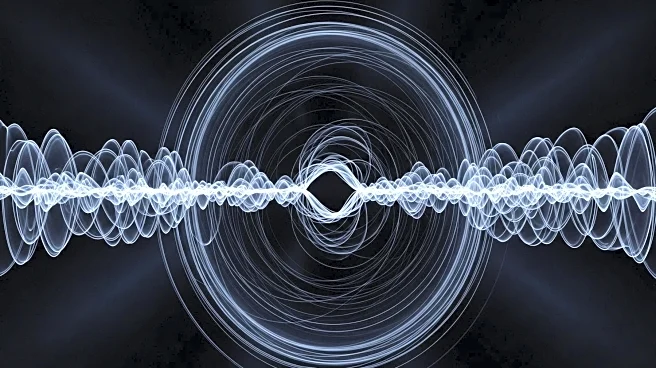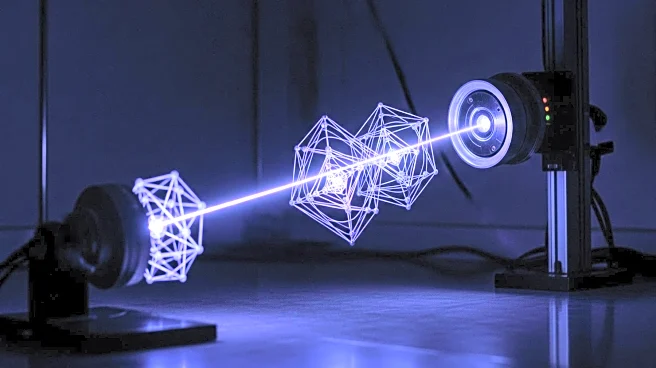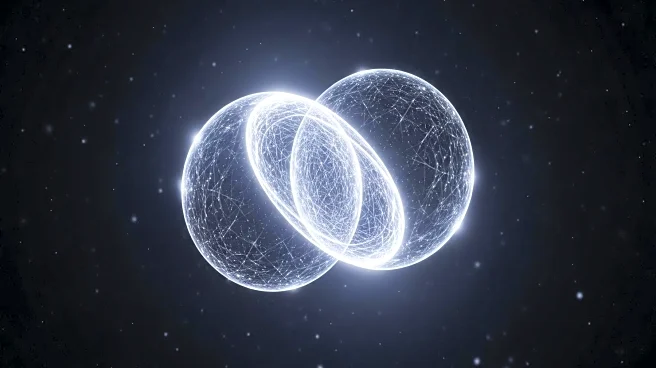What's Happening?
Physicists at the University of Colorado Boulder have successfully created a time crystal that can be observed with the naked eye, marking a significant advancement in the study of this unique form of matter. Time crystals exhibit continuous, repeating patterns over time, similar to how atoms in a regular crystal repeat in space. This breakthrough was achieved using liquid crystals, which are molecules with properties between those of a liquid and a solid. By shining light on these liquid crystals, researchers induced ripples of twisting molecules that maintained a distinct rhythm, even when external conditions were altered. This discovery fulfills the criteria for a time crystal, as the rhythm was out of sync with any incoming force.
Why It's Important?
The ability to observe time crystals at a macroscopic scale opens up new possibilities for research and practical applications. This development could lead to a deeper understanding of time crystals and their potential uses in various fields, such as anti-counterfeit technology. The study of time crystals also contributes to the broader understanding of quantum mechanics and material science, offering insights into the behavior of matter under different conditions. The research could pave the way for new technologies that leverage the unique properties of time crystals.
What's Next?
Further research is expected to explore the potential applications of time crystals in technology and industry. Scientists may investigate how these crystals can be integrated into existing systems or used to develop new materials with unique properties. The study of time crystals could also lead to advancements in quantum computing and other cutting-edge technologies. As research progresses, collaborations between physicists and material scientists may yield innovative solutions and applications.
Beyond the Headlines
The creation of visible time crystals challenges existing notions of matter and time, prompting a reevaluation of fundamental scientific principles. This breakthrough may inspire new theoretical models and experimental approaches in physics. Additionally, the interdisciplinary nature of this research highlights the importance of collaboration across scientific fields to achieve groundbreaking discoveries.











